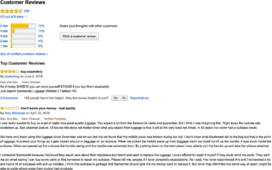
Gift card fraud costs consumers millions annually. Scammers create fake cards, steal numbers from legitimate cards, and sell empty cards online. Purchasers discover problems only when attempting to use cards for payments. By then, recovering money becomes nearly impossible. Verifying gift card authenticity before purchase or use prevents financial losses from sophisticated fraud schemes. Simple checks catch most fake cards immediately. Examining packaging, testing card numbers, and confirming balances through official channels through amexgiftcard/balance portals all protect against scams. These verification methods help shoppers distinguish legitimate cards from clever counterfeits, increasing the population of retail shelves and online marketplaces.
Check physical packaging
The packaging of legitimate gift cards is tamper-evident. Purchase cards after carefully inspecting the packaging. Fraudsters open packages, card numbers are logged, and the packages are resealed poorly. Tampering can be detected by uneven adhesive, wrinkled plastic, or misaligned cardboard. Cards in damaged packaging should never be purchased, regardless of denomination.
- Scratch-off panels covering security codes should be intact, not previously scratched, then restickered with fake panels
- Activation stickers over magnetic strips remain undamaged on authentic cards versus reapplied stickers on tampered cards
- Packaging colors, fonts, and logos match other cards from the same brand displayed nearby on retail racks
- Barcodes scan properly at registers during purchase, rather than producing error messages indicating fake cards
- Weight feels appropriate for cards containing actual magnetic strips versus lightweight counterfeits using printed paper
Retailers sometimes miss restocked tampered cards. Scammers remove cards, steal information, and return them to the shelves. Careful examination catches what store employees overlook during restocking.
Test card numbers
Gift card numbers follow specific formats for each brand. Amex cards start with particular digits. Visa and Mastercard follow different patterns. Security codes contain specific digit counts. Fake cards often use random numbers that do not match legitimate formats. Online balance checkers validate card numbers instantly. Fake cards return error messages immediately.
- Card number lengths match standard formats – 15 digits for Amex, 16 for Visa/Mastercard gift cards
- Security codes contain correct digit counts – 3 digits for Visa/Mastercard, 4 for Amex
- Expiration dates fall within reasonable ranges, not absurdly far future dates, which are impossible for gift cards
- Card verification tools on issuer websites confirm numbers belong to active, uncompromised cards
– Multiple failed verification attempts indicate stolen numbers already reported, blocked by issuers
Never purchase cards if numbers fail validation tests. Even if the packaging looks perfect, invalid numbers mean worthless cards.
Confirm the balance immediately
Activating cards immediately after purchase, checking balances confirms funds exist. Delays allow fraudsters to drain cards before legitimate buyers attempt to use them. Immediate verification catches problems while receipts remain available. Save purchase receipts until confirming card balances. Receipts prove purchase legitimacy if disputes arise. Many retailers require receipts for fraud investigations and replacements. Balance confirmation takes minutes through issuer websites or phone systems. This small time investment prevents larger losses from using compromised cards.
Finding fraudulent cards helps protect other consumers. Reporting tampered packaging, fake cards, unauthorized sellers to retailers, issuers, law enforcement prevents additional victims. Retailers want to know about fraud affecting their inventory. They investigate, remove compromised cards, and improve security. Law enforcement tracks fraud patterns and pursues criminals when sufficient reports accumulate.






